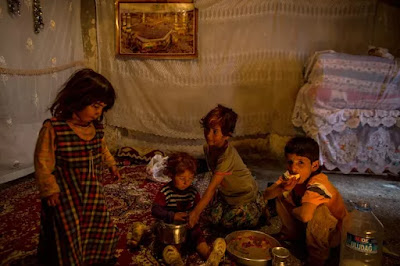Portuguese born in Compiègne, France, in 1987, Daniel lives in Portugal, near Porto, since he is 10 years old.
Daniel Rodrigues became a professional photographer after the passage by the Portuguese Institute of Photography (2010). His career started in the portuguese newspaper, Correio da Manhã, and he also worked in Global Imagens agency, responsible for photographs in newspapers as Jornal de Notícias, Diário de Notícias and O Jogo.
He is an award winning photographer who in 2013 won a first place in the World Press Photo, Daily Life category, in 2015 a third place as Photographer of the Year in POYi, in 2017 the Ibericoamerican Photographer of The Year in POY LATAM, a third place as Photographer of the Year in NPPA - Best of photojournalism and among many other awards.
The New York Times, The Wall Street Journal, The Washington Post, Al Jazeera, Helsingin Sanomat, Die Welt, Daily Mail, CNN, BBC, Folha de São Paulo, Courrier Internacional, Expresso, Visão Magazine, among others, are where he already has published photos.
Daniel is currently based in Portugal. He works as a freelance photographer all around the world and a contributor photographer for the New York Times since May 2015.
AWÁ GUAJÁ - BRASIL
The Awa indigenous tribe lives in the Amazon Rainforest in the Brazilian state of Maranhão, divided into four villages: Awa, Tiracambú, Juriti and Guajá. A total of 400 people living as close as possible to the purity of its origins. The hunting days are long, but do not spare anyone: today, children and women also head the expedition through the dense forest. Here there is no certain age (the last of these families was discovered less than ten years ago), only the day-to-day survival.
The help of the institutions responsible for its preservation leads to the community a few words in Portuguese, urban clothing and rare utensils for easy daily life. But the goal is to be an arm more in the fight against the increasing encroachment of loggers in search of the most precious of the Amazon forest, the trees that give it the surname: The Lung of the Earth.
THE IRON TRAIN
The Iron Train is one of the longest train in the world, the train is about 2.5 km. A journey that goes from Nouadhibouh to Zouerate (Mauritania), totaling 652 km in the middle of the Sahara desert that lasts about 20 hours. An epic journey where residents, poor and penniless use dangerous train to visit relatives in the homeland or carrying goods such as live animals. High temperatures during the day and very low temperatures during the night makes the journey is not easy. But the worst is the dust that is produced by wagons full of iron minerals that come from a mine 30km Zouarate to be unloaded cargo boats in the port of Nouadhibouh.
RRAPA DAS BESTAAS
The Wild Magic
Throughout Galicia, in northern Spain, is fulfilled the annual ritual of cutting the tails of wild horses that live free in the mountains. But is in the village of Sabucedo that the tradition of "Rapa das Bestas" gains strength as international event with the attendance, every summer, of hundreds of fans and curious of this "magic party".
The origins of the initiative ride until the sixteenth century, even if the uncertainty about their religiosity dissipates between legends, stories of bravery and the delivery of beasts to St. Lawrence for protecting villages against the plague.
After the prayers, "Rapa das Bestas" includes an incursion by the hills to join the wild horses together and the fight that puts men - and women – and animals to measure forces indoors the Curro, that at all resembles a gladiatorial arena. The goal is to let the horses immobilized on the ground for them tails and manes to be cut. Similarities with the handle of bulls in Spanish lands will not be just a coincidence.
Although there are groups against holding of this tradition, against the struggle between wild horses, against the abusive cutting of their tails and manes, the "party" continues, maintaining belief in a ritual that celebrates the strength of the inhabitants of Sabucedo to, for centuries, protect their animals against men, wolves and fireworks.S BESTAS
Daniel R






































































